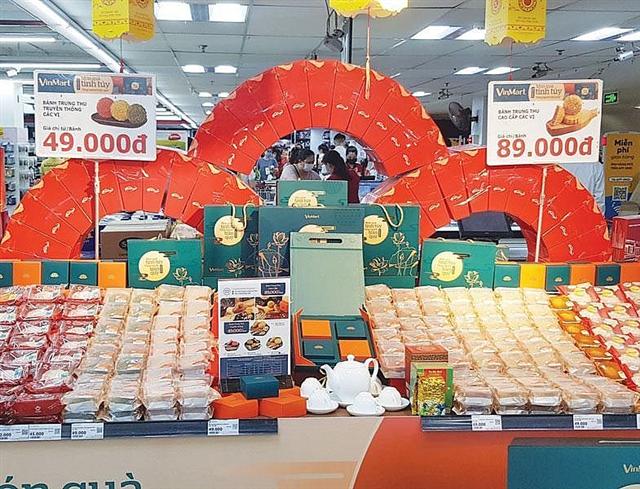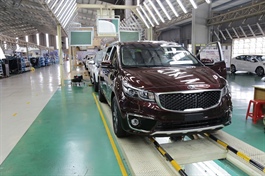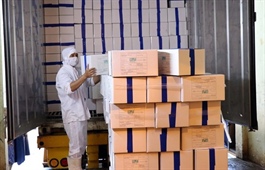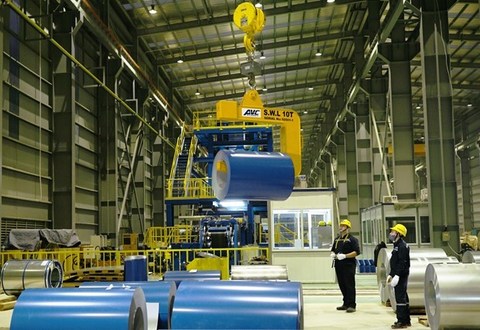Muted mid-autumn cake business anticipated this season
Muted mid-autumn cake business anticipated this season
Mid-autumn cake sales in this year season are forecast to be 10-20 per cent behind last year due to COVID-19, as major players are drawing up cautious business plans and small players are gradually losing their footing.

The mid-autumn cake market will be split among major, traditional brands
|
Due to the adverse impacts of the prolonged COVID-19 pandemic, the market demand for mid-autumn cake this year is forecast to slide 10-20 per cent compared to the corresponding period last year, a stark contrast to the usual 5-10 per cent annual growth.
The muted demand did not hinder the cake makers efforts to invest and develop new products to fuel consumption.
According to Kao Sieu Luc, CEO of ABC Bakery, the brand behind thanh long (red dragon fruit) bread which created stirred up the southern market last year, the company has rolled out a variety of fresh products in this season which were made of Vietnamese thanh long, durian, and coffee, blended with high-grade imported ingredients such as almond and walnut kernels from the US.
|
The muted demand did not hinder the cake makers efforts to invest and develop new products to fuel consumption. |
Other renowned brands like Bibica and KIDO are prudent when penning their production plans for this year’s mid-autumn.
Bibica has decided to produce 600 tonnes of mid-autumn cakes, about as much as last year, which would contribute 15 per cent to the company’s total full-year revenue.
“Our production plan consists of four phases to closely mirror market movements and make suitable adjustments. As the pandemic takes an unpredicted turn, we must not downplay the threat,” said Nguyen Quoc Hoang, CEO of Bibica.
Hoang added that in recent weeks, the company has recorded positive signs from the group of institutional customers which make up 60 per cent of the total mid-autumn cake volume Bibica sells every year.
Meanwhile, the demand from retail customers which make up the remaining 40 per cent is forecast to be softer than in previous years.
Meanwhile, KIDO set out the modest plan of turning out 400 tonnes of products with an estimated revenue of VND200 billion ($8.69 million) and profit of about VND50 billion ($2.17 million).
The plan to return to mid-autumn cake production was conceived by KIDO several years before the emergence of COVID-19.
“We keep close eyes on market movements to pen out suitable business plans for each particular situation,” said Bui Thanh Tung, KIDO deputy general director.
In 2016, KIDO sold its confectionery business to foreign partner Mondelez. After fulfilling its commitment to the foreign partner of not to take part in the confectionery business for five years, the company is now returning to the snack food business, its core business line, and is slated to launch products from the third quarter this year under the brand Kingdom, including mid-autumn cake items.
Based on the experience of confectionery makers, besides quality, there are three essential factors during the mid-autumn cake season, including research and development (R&D) to produce the right items suiting customer taste; drawing up suitable marketing ideas to gain the affection of customers; and putting in place an extensive distribution network to approach customers the fastest.
The domestic confectionery market, particularly mid-autumn cake sales, is shaped by two eminent groups of businesses: sizeable businesses with long years of tradition like Bibica and chain-based brands developing in niche local markets such as ABC Bakery, Givral, and Brodard.
These two groups hold an advantage in the mid-autumn cake season while small brands have undergone tough market screening in the past years.
“The consumers are growing increasingly demanding, particularly in regards to products used as gifts, providing opportunities to older brands like Bibica,” said Nguyen Quoc Hoang.
In the confectionery business, the production and trade of mid-autumn cake is a field where the expertise of business leaders is apparent. Weeks before the mid-autumn festival, cakes can fetch from tens to several hundred thousand Vietnamese dong, depending on the market segment but right after the festival, prices go into a nosedive. The businesses, thereby, must create flexible sales policies to avoid unsold stock after the festival.
























